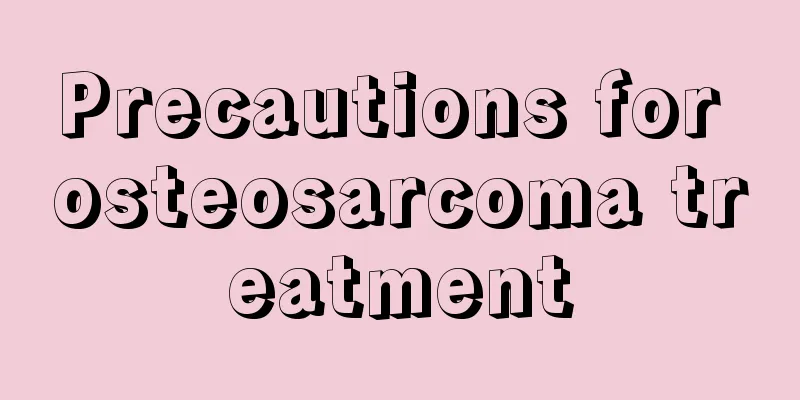How should lung cancer be diagnosed? Clinical diagnostic methods for lung cancer

|
The treatment of lung cancer is a problem that many people are very concerned about. Nowadays, there are many patients with lung cancer, so everyone has to pay attention to the treatment of the disease. However, to treat lung cancer, everyone should first make a correct diagnosis and not blindly treat it in order to ensure the treatment effect. 1. X-ray examination. X-ray examination is the most commonly used method for diagnosing lung cancer. X-ray examination can help you understand the location and size of lung cancer. Although X-ray examination of early lung cancer cases may not show a mass, it may reveal local emphysema and atelectasis caused by bronchial obstruction, or infiltrative lesions or pulmonary inflammation in the vicinity of the lesion. 2. Bronchoscopy. Bronchoscopy is an important diagnostic method for lung cancer. The pathological changes of the bronchial lining and lumen can be directly observed through a bronchoscope. If cancer or cancerous infiltration is observed, tissue can be taken for pathological section examination, or bronchial secretions can be aspirated for cytological examination to confirm the diagnosis and determine the histological type. 3. Radionuclide examination. Radioactive drugs such as 67Ga-citrate have an affinity for lung cancer and its metastatic lesions. After intravenous injection, they can be concentrated in the tumor and can be used for the diagnosis of lung cancer to show the scope of the cancer. The positive rate can reach about 90%. 4. Cytological examination. Most patients with primary lung cancer can find detached cancer cells in their sputum, and the histological type of the cancer cells can be determined. Therefore, sputum cytological examination is a simple and effective method for diagnosing lung cancer. The positive rate of sputum cytological examination for central lung cancer can reach 70-90%, while the positive rate of sputum examination for peripheral lung cancer is only about 50%. Therefore, a negative sputum cytological examination cannot rule out the possibility of lung cancer. Although lung cancer is a very difficult disease to cure, there are many methods of treating the disease in clinical practice. If the patient can actively undergo treatment, the treatment effect is also good. During the treatment process, the patient should also adjust his or her diet in order to effectively control the disease. |
<<: How should lung cancer patients eat? Main considerations for lung cancer diet
>>: What causes liver cancer? 3 reasons tell you the real cause of liver cancer
Recommend
What are the early symptoms of cardia cancer? Be careful if you have these 4 symptoms
When cardia cancer reaches its late stage, it is ...
What are the benefits of silver jewelry to the human body?
Some women who love beauty always match their clo...
Does lucky bamboo absorb formaldehyde?
Some people worry that the formaldehyde content i...
Glucosamine hydrochloride capsules
Medicine is very common, and different medicines ...
What are the benefits of buckwheat pillow?
If you want to have a good sleep, you must adjust...
Before autism test, you need to know these
Autism, also known as childhood autism, is a very...
Symptoms of recurrence of bile duct cancer after surgery? There are 4 symptoms
Cholangiocarcinoma is a highly malignant tumor, a...
Chuanwu mugwort honey drink can relieve cancer pain in patients with cervical cancer
After cervical cancer patients develop the diseas...
Traditional Chinese Medicine Treatment Methods for Tongue Cancer
Eat while it’s hot is deeply rooted in people’s m...
How long is the shelf life of saline solution
Normal saline solution is something we use freque...
The benefits of drinking whole milk powder
I think everyone should be familiar with milk, ri...
What's with the light hiccups
Under normal circumstances, hiccups are not commo...
What is the probability of a young girl getting cervical cancer? What are the prevention guidelines for cervical cancer?
Cervical cancer is the number one killer in women...
Application of laparoscopy in surgical treatment of colon cancer
Compared with traditional open surgery, laparosco...
The hazards of home cold light whitening devices
Skin whitening has always been a concern for ever...









